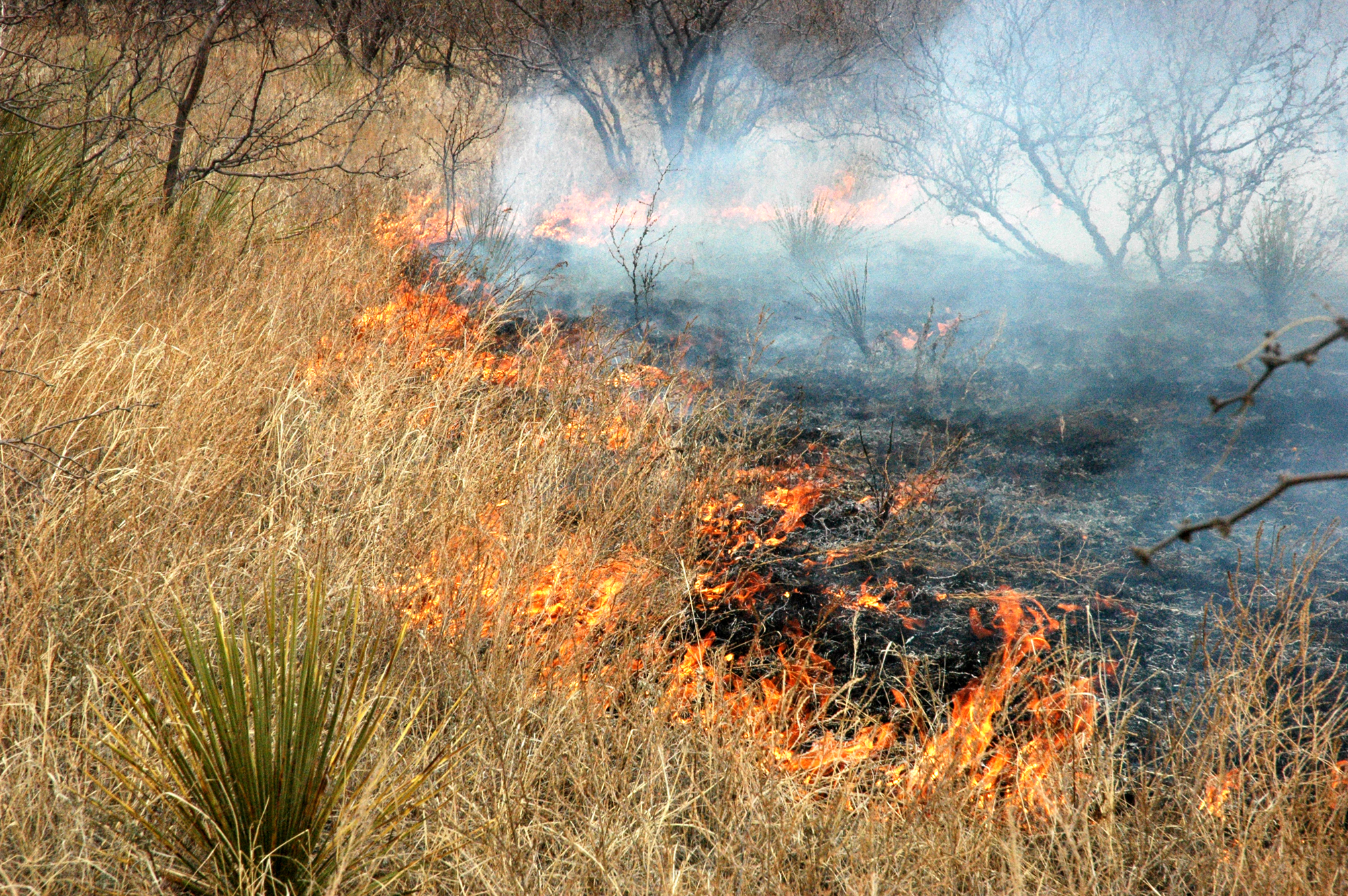Farm & Ranch
Wildfire dangers increase with high winds despite recent moisture

Writer: Kay Ledbetter, 806-677-5608, [email protected]
Contact: Dr. Ted McCollum, 806-677-5600, [email protected]
AMARILLO – High winds and drying grass and brush should prompt homeowners and landowners alike to take time to prepare before wildfires spark across the state, said a Texas A&M AgriLife Extension Service specialist.
“Folks might think the recent rains will keep things from burning, but these winds will dry things out very quickly,” said Dr. Ted McCollum, AgriLife Extension beef cattle specialist in Amarillo.
“It might even be time to get the mower out to knock down any dry grass around homes and outbuildings, and ranchers will need to be checking their water supplies and fire suppression equipment,” McCollum said.
The National Weather Service has issued a number of fire danger warnings for regions of the state due to high winds and low humidity, stating “outdoor burning and activities that cause open sparks or flames are discouraged….weather conditions will be favorable for the development of large grass fires.”
McCollum said conditions are right for wildfires to start with any ignition source if the available fuel is dry and the winds are high in the coming weeks. Primary ignition sources include motorists who throw cigarettes out along the highway or drag chains that cause sparks, and swinging electrical lines.
Ranchers and landowners bordering any roadway, particularly, need to tend to fire breaks along fence lines and check water tanks and other firefighting equipment to make sure they are in working order, he said.
Some other specific precautions homeowners and landowners can take now are:
– Develop an escape or evacuation plan. The evacuation plan should include how to transport animals and livestock that may be in danger.
– Place fire extinguishers in all barns, vehicles and tractors. Check extinguishers periodically for charge. Discard damaged or used fire extinguishers.
– Keep barns and buildings clean of trash and other combustible materials such as hay, lumber and empty feed sacks. Keep outside areas clear of high grass, weeds and other debris.
– Make sure your farm has an adequate water supply, such as an irrigation ditch, water tank or pond.
– Park tractors and implements away from combustible materials such as hay stacks and fuel storage containers.
– Keep aboveground fuel storage tanks at least 40 feet from buildings.
McCollum said when the higher winds start whipping power lines and electrical sources above heavy growths of grass and brush, conditions are such that any spark could start a wildfire. Any locations where an electrical source is present, such as oil and gas well pumps, should be checked to ensure the lines cannot swing into contact with one another and create a spark, he said.
For a complete list of wildfire-related documents concerning preparation, mitigation and recovery, go to: http://texashelp.tamu.edu/004-natural/fires.php.
-30-
Find more stories, photos, videos and audio at http://today.agrilife.org
Farm & Ranch
Hazards of Backyard Poultry

By Barry Whitworth, DVM
Having backyard poultry is a popular agriculture enterprise. According to the United States Department of Agriculture, 0.8 percent of all households in the United States have chickens. People keep chickens for a variety of reasons with table eggs being one of the more common reasons.
Unfortunately, some of these poultry producers are not aware of the hazards that come with keeping poultry because many times they carry pathogens but appear healthy.
Chickens are carriers of several zoonotic diseases. These are diseases that can be passed from animals to humans. According to a recent survey in Pennsylvania, a majority of backyard poultry producers were aware of the dangers of avian influenza. However, this study also revealed that far fewer producers were aware of the risk of possible exposure to Salmonella and Campylobacter.
The lack of knowledge about the hazards of raising poultry likely contributes to the continued issues of Salmonella outbreaks associated with backyard poultry. In 2023, the Centers for Disease Control and Prevention reported 1,072 illnesses of Salmonella linked to backyard poultry, and 272 of those patients required hospitalization. Oklahoma reported 43 individuals with the disease.
To read more, pick up a copy of the April issue of NTFR magazine. To subscribe by mail, call 940-872-5922.
Farm & Ranch
Ag Elsewhere: Wyoming

By Tressa Lawrence
Babies are tucked away in every nook and cranny. Many ranchers across Wyoming have baby animals popping up all over this time of year.
Farm & Ranch
Ag Elsewhere: Montana

By Lindsey Monk
Another load of grain in to keep feeding the calves until the green grass can really start popping.
-

 Country Lifestyles1 year ago
Country Lifestyles1 year agoScott & Stacey Schumacher: A Growth Mindset
-

 Equine7 months ago
Equine7 months agoThe Will to Win
-

 Country Lifestyles7 years ago
Country Lifestyles7 years agoStyle Your Profile – What your style cowboy hat says about you and new trends in 2017
-

 Country Lifestyles4 years ago
Country Lifestyles4 years agoAmber Crawford, Breakaway Roper
-

 HOME7 years ago
HOME7 years agoGrazing North Texas – Wilman Lovegrass
-

 Country Lifestyles7 years ago
Country Lifestyles7 years agoDecember 2016 Profile, Rusty Riddle – The Riddle Way
-

 Country Lifestyles8 years ago
Country Lifestyles8 years agoJune 2016 Profile – The man behind the mic: Bob Tallman
-

 Outdoor9 years ago
Outdoor9 years agoButtercup or Primrose?






